These bugnes lyonnaises known as New Orleans-style beignets are made to celebrate carnival. They use no yeast, are flavored with lemon, deep-fried, and then covered in sugar.
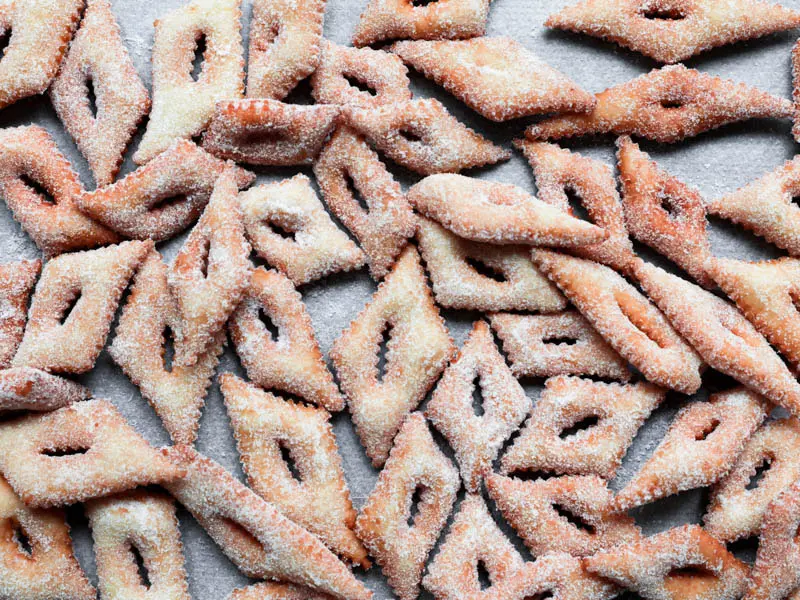
Who can refuse a deep-fried pastry? Not me, for sure! These bugnes lyonnaises, also known as New Orleans style beignets, are made to celebrate carnival. They are so easy to make and require no proving because guess what, no yeast! Just some rest time in the refrigerator so you can properly roll them out. Easy. The hard choice being, should you sprinkle with powdered sugar or roll them in granulated sugar? Any excuse to make these New Orleans-style beignets is good with me. Even if it's not Mardi Gras! Can't wait for you to try these bugnes out!
The word bugne means "beignet" in French, which means donut in English, but don't be confused they are not the same. They are an old pastry that existed already in Roman times and were consumed at the time of "carnival" or Mardi Gras. Almost every European country has its own version. I got to know this French version in school, and I loved them.
The bugne is a thin pastry, that uses baking powdered as a leavening agent, is scented with lemon scent, deep fried and then covered in sugar or dusted with powdered sugar.
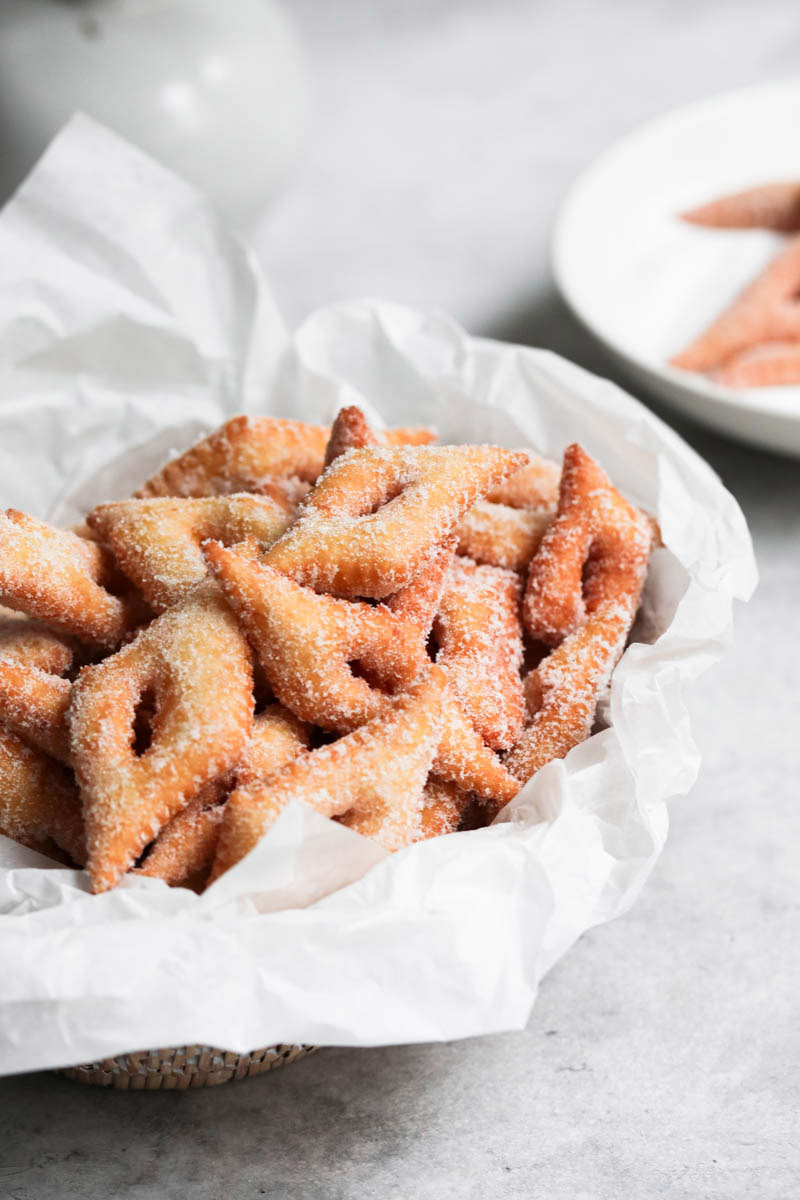
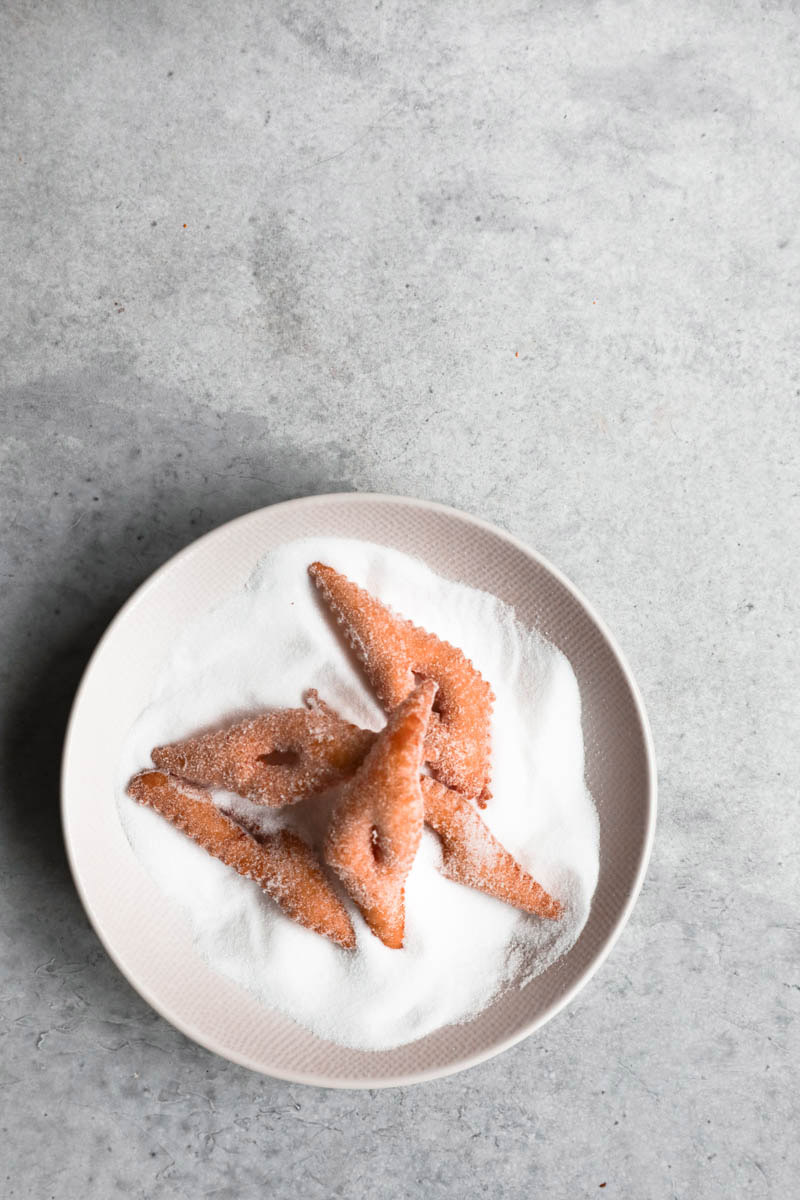
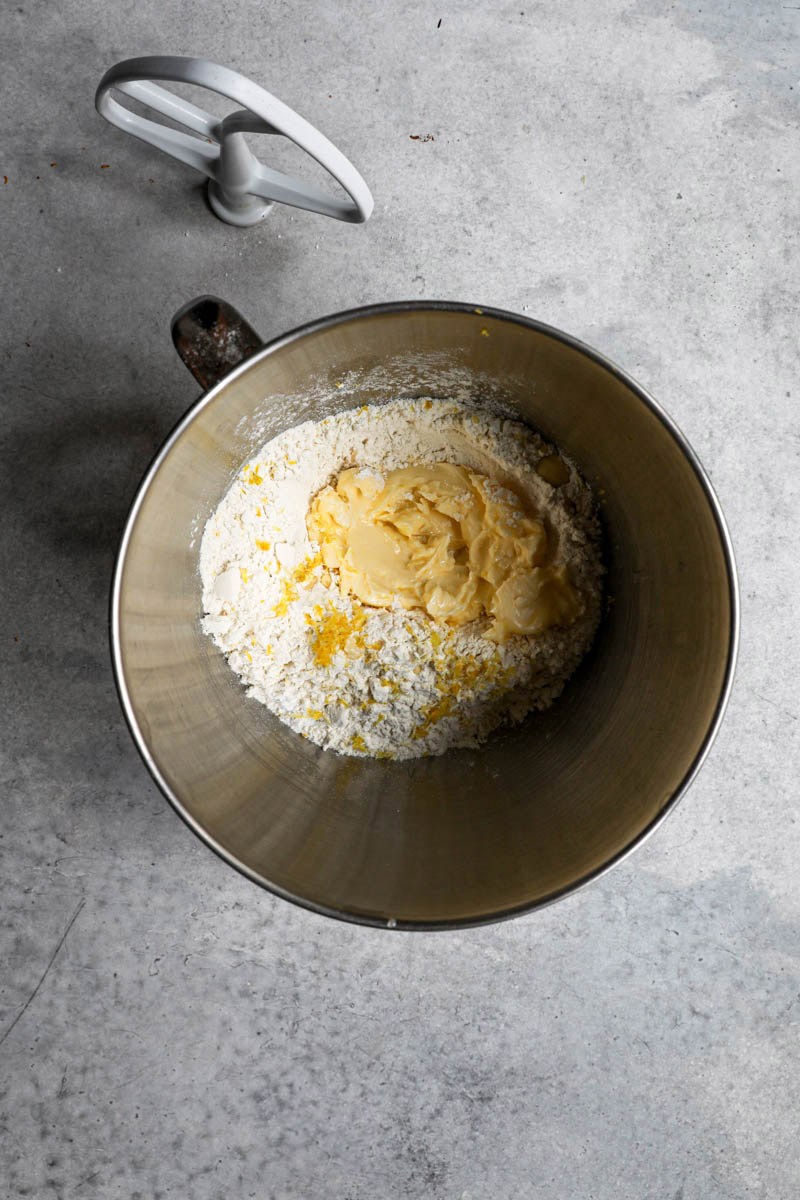
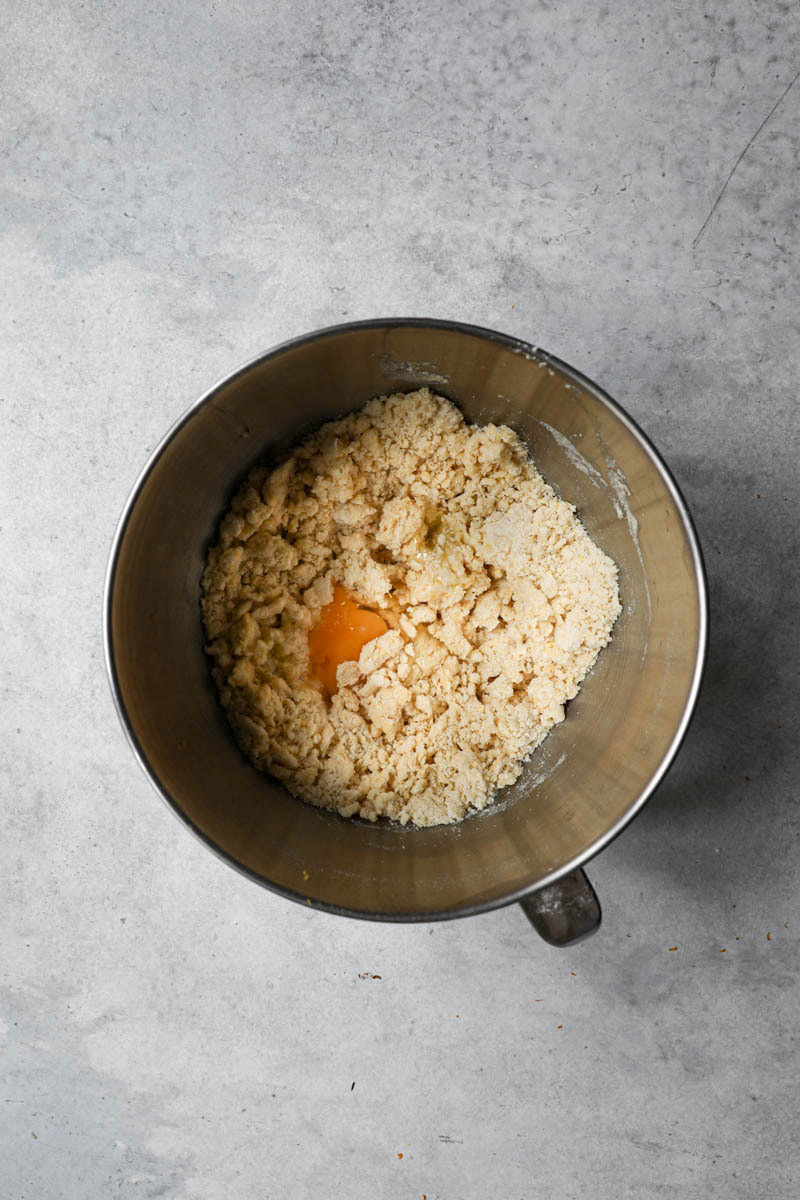
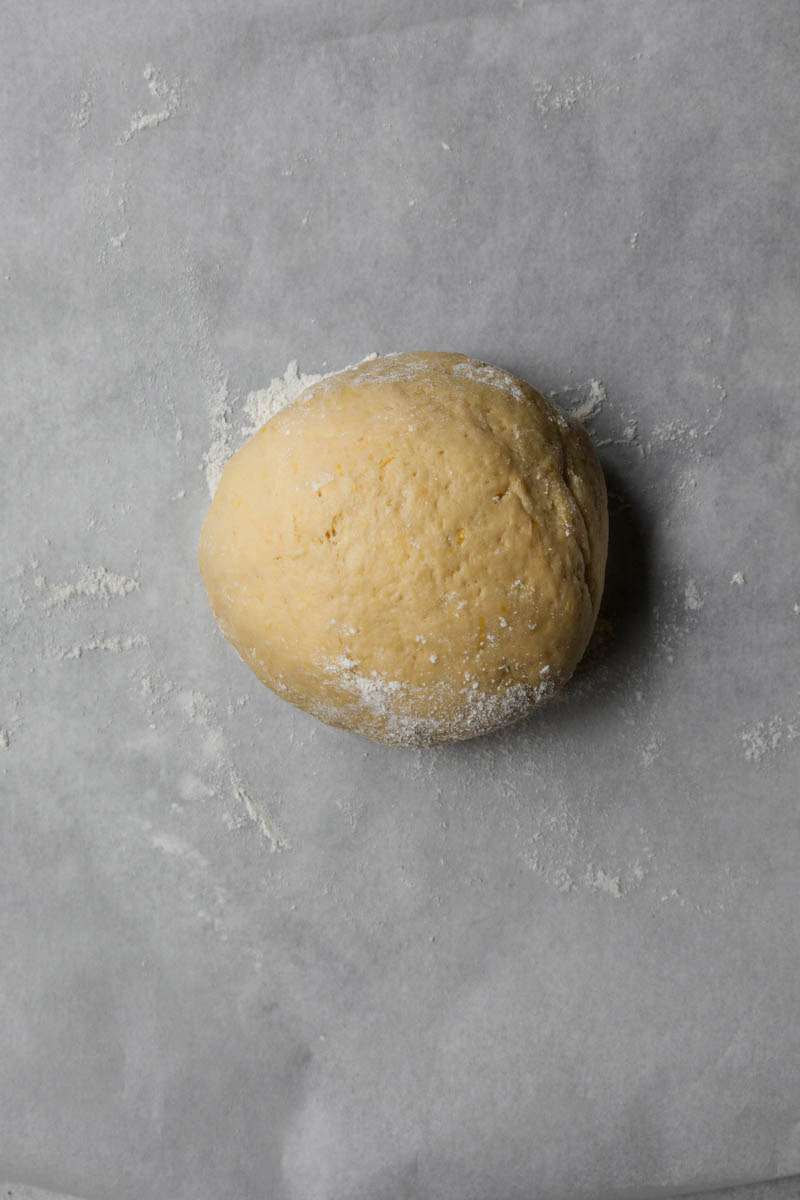
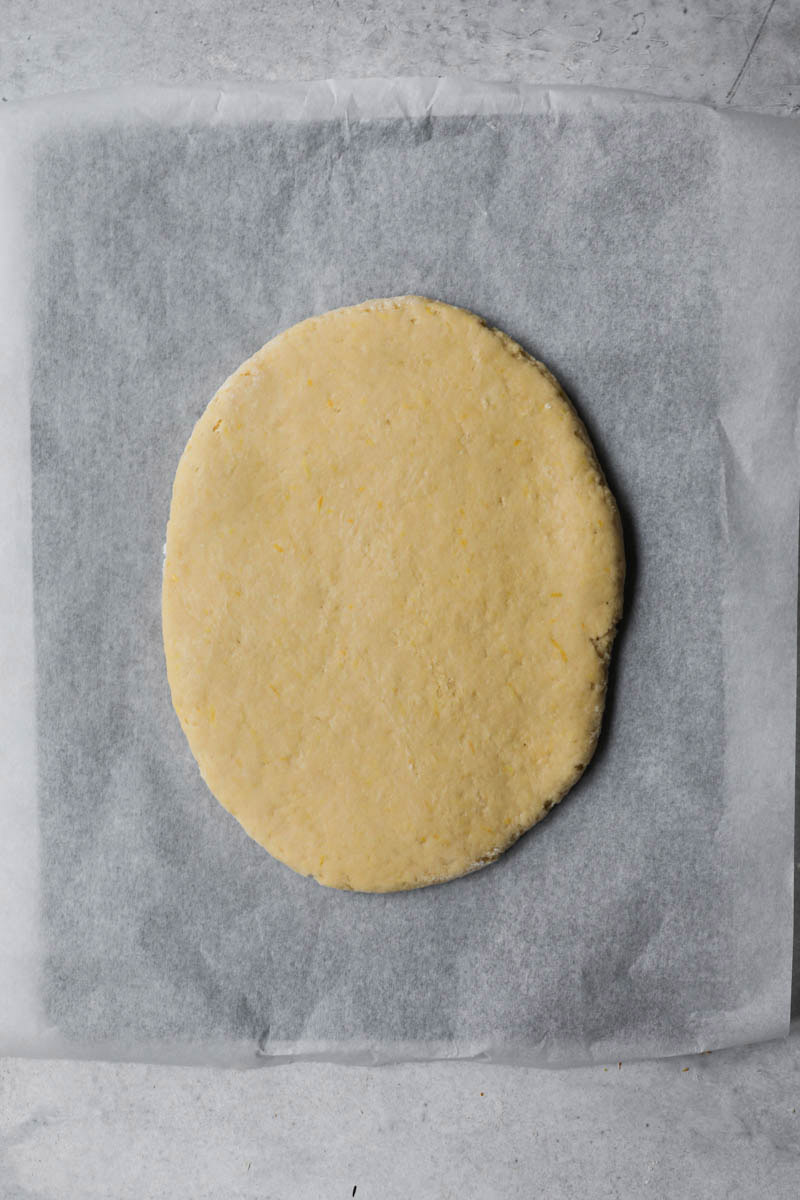
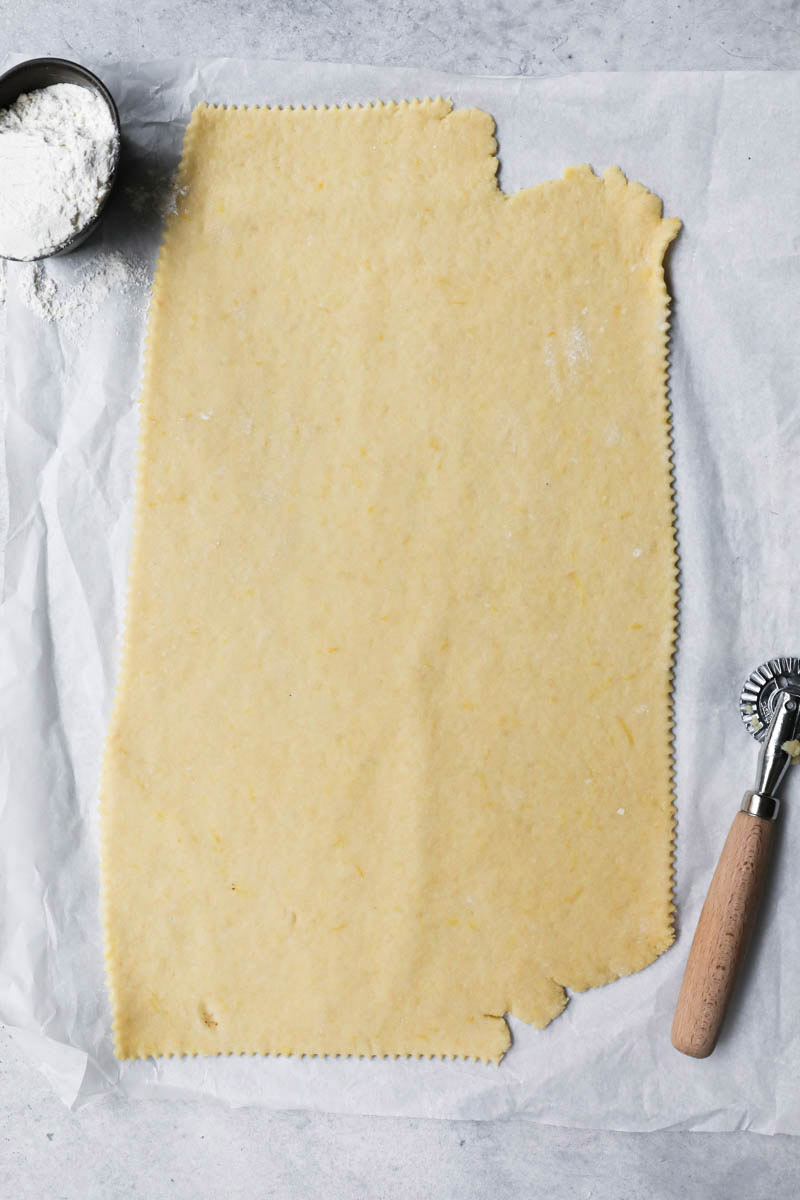
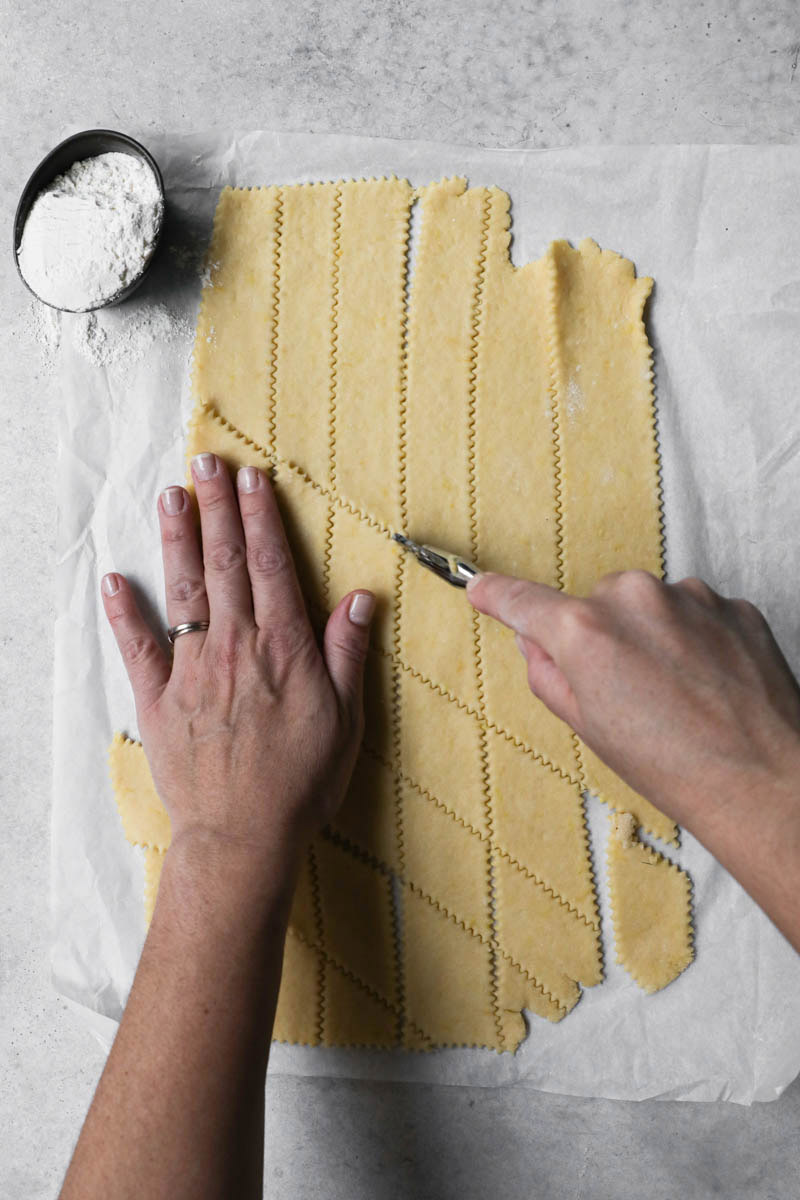
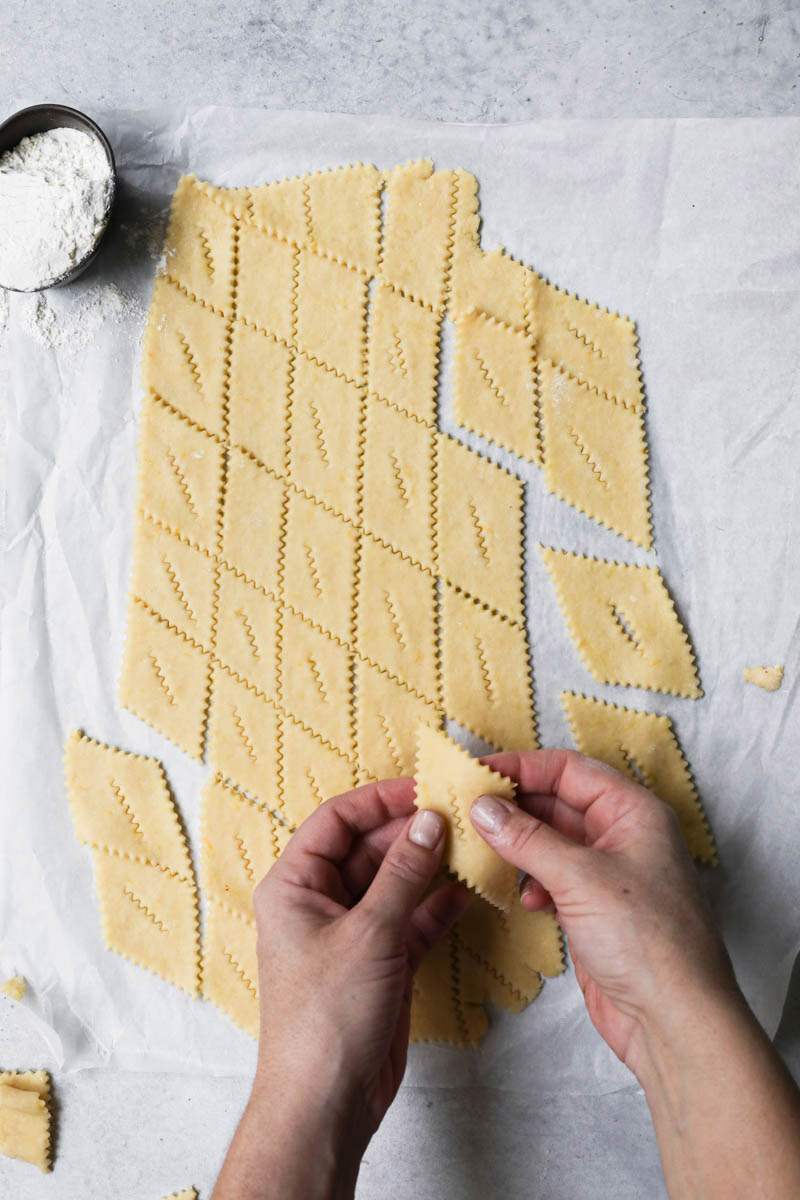
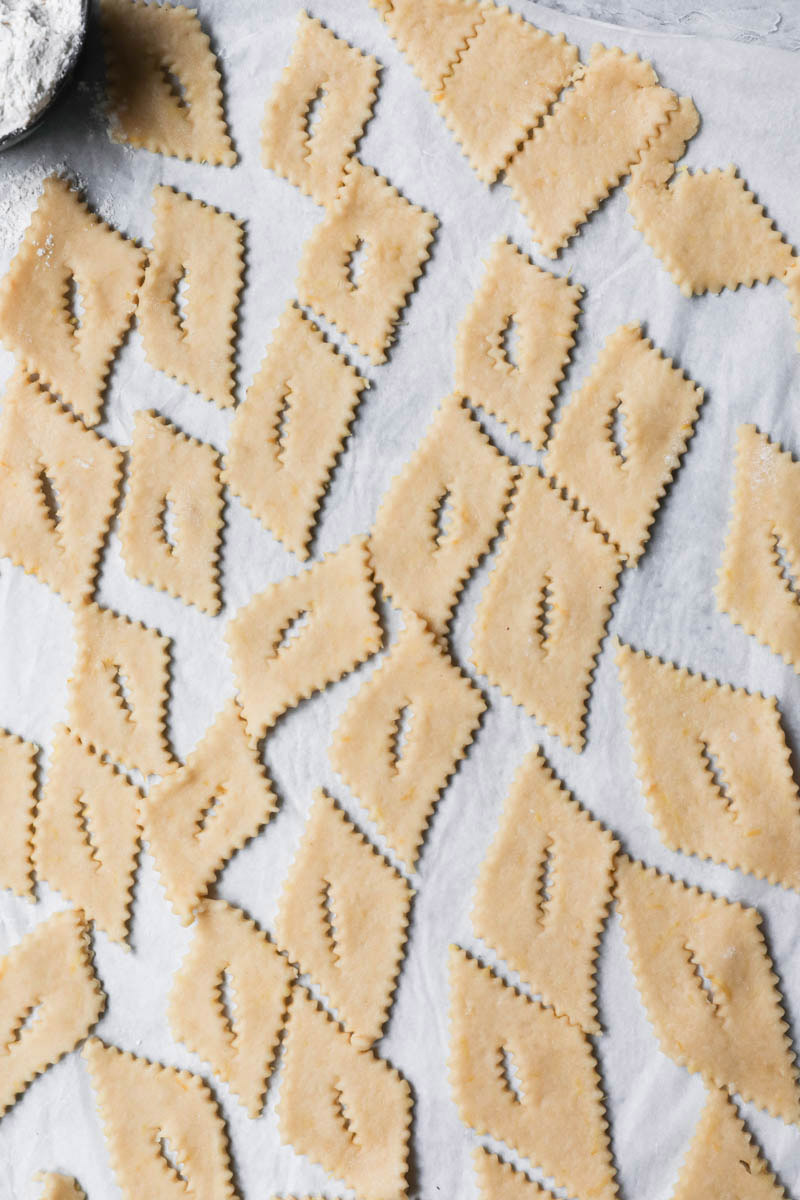
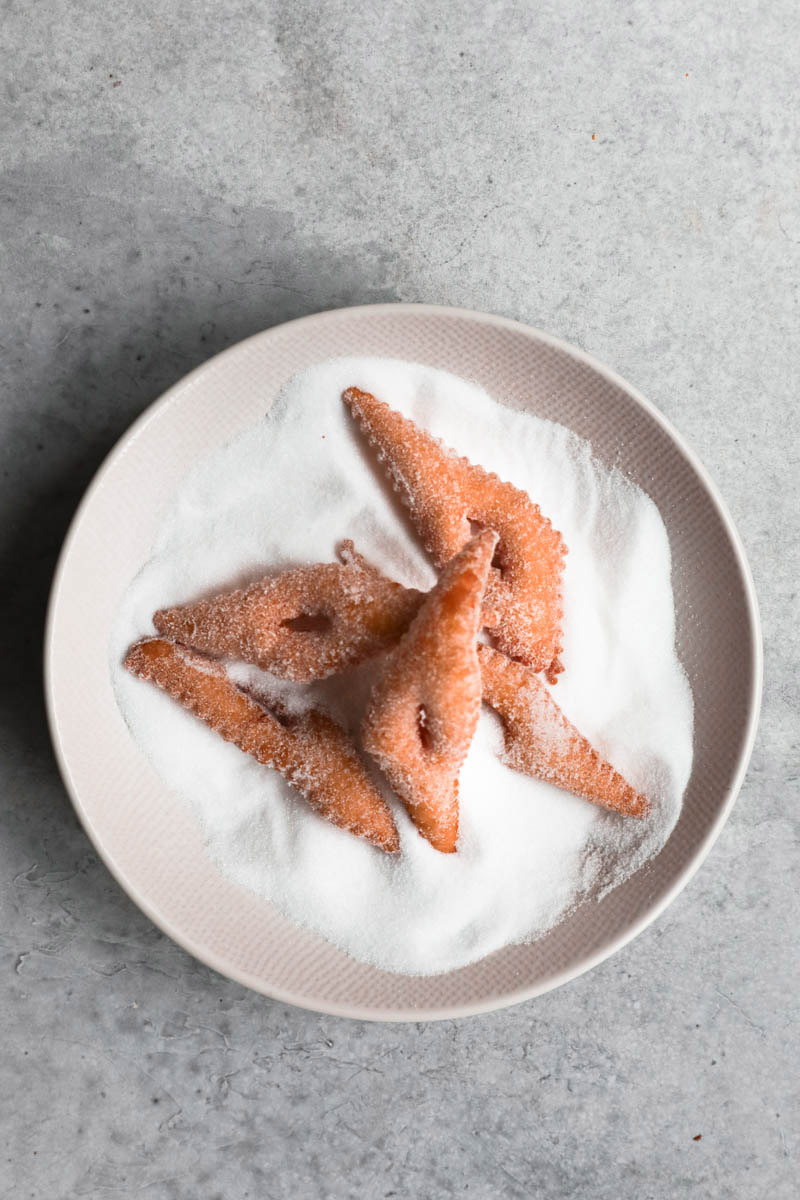
Bugnes are easy to prepare. The tricky part is that the dough could get sticky when rolling it out so it's best to work with it when it's cold. You should:
Note: if you feel the dough getting sticky and difficult to work with, cover once again and put the dough back in the fridge until it has hardened a bit. Patience is important in pastry making! I learned it the hard way!
Before frying anything, you need to prepare your workspace so you can work calmly:
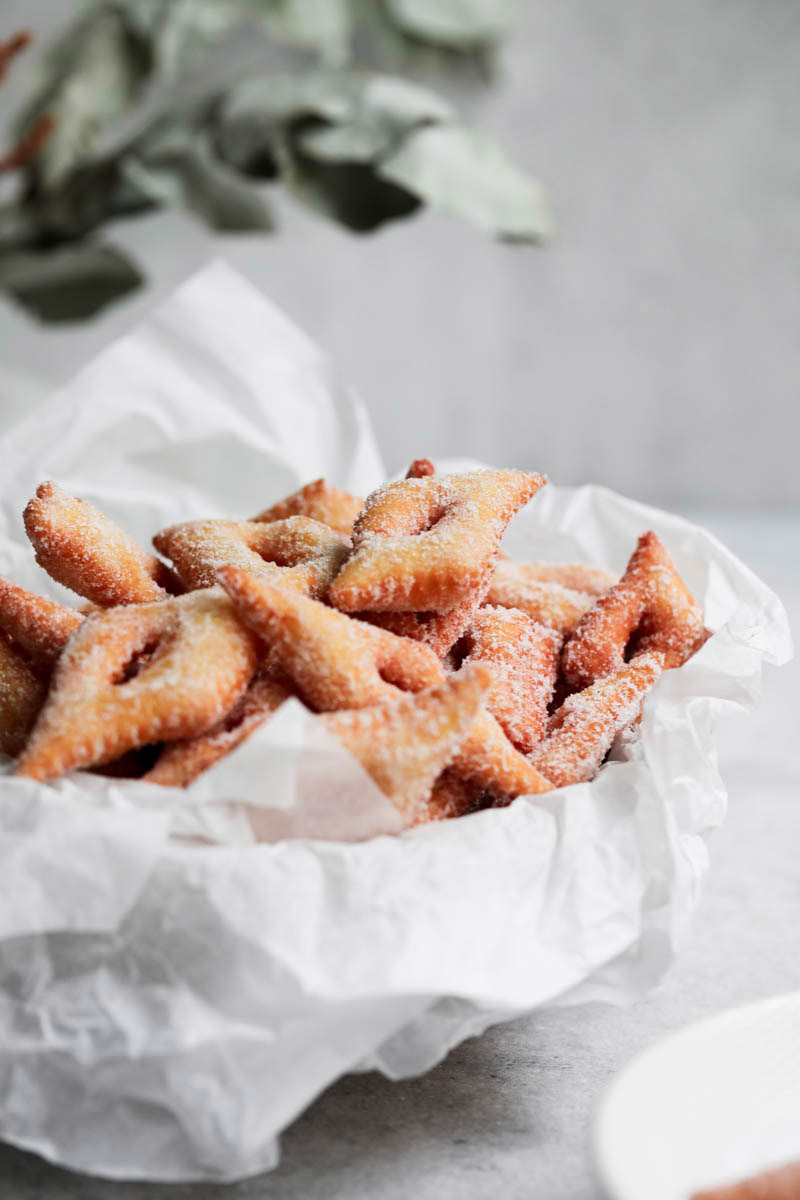
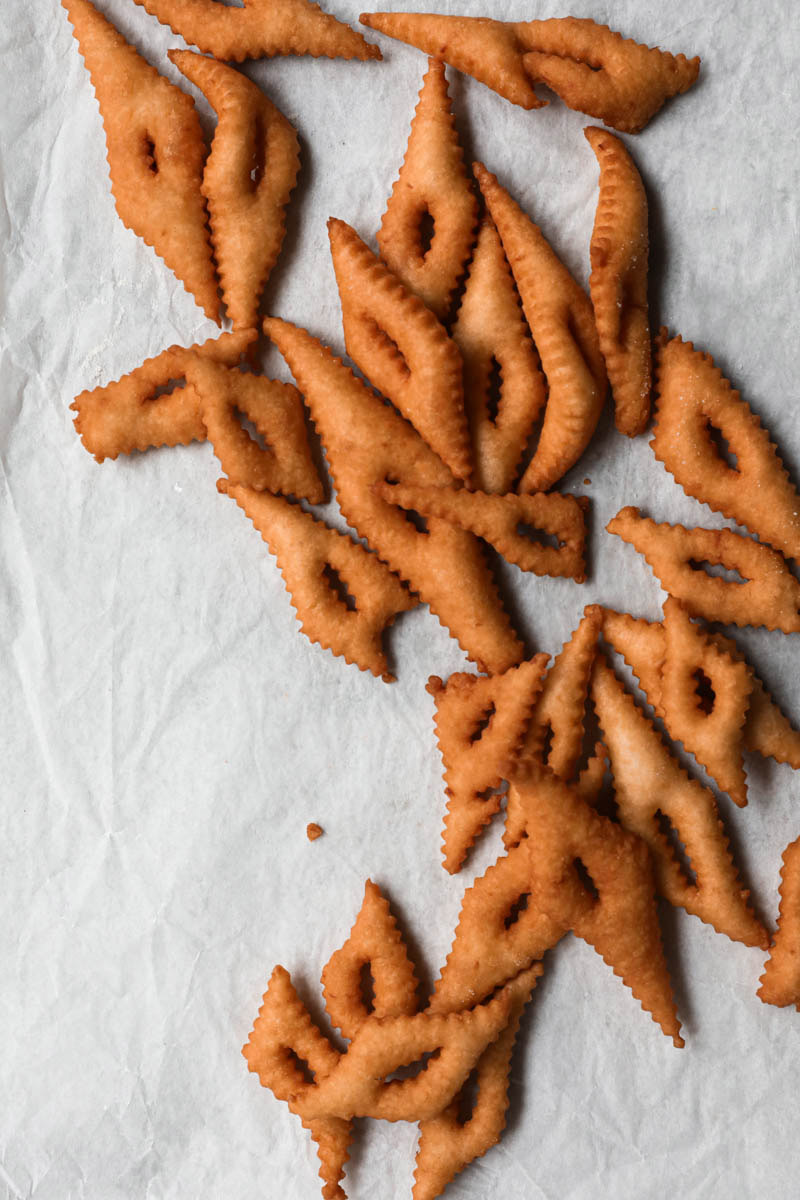
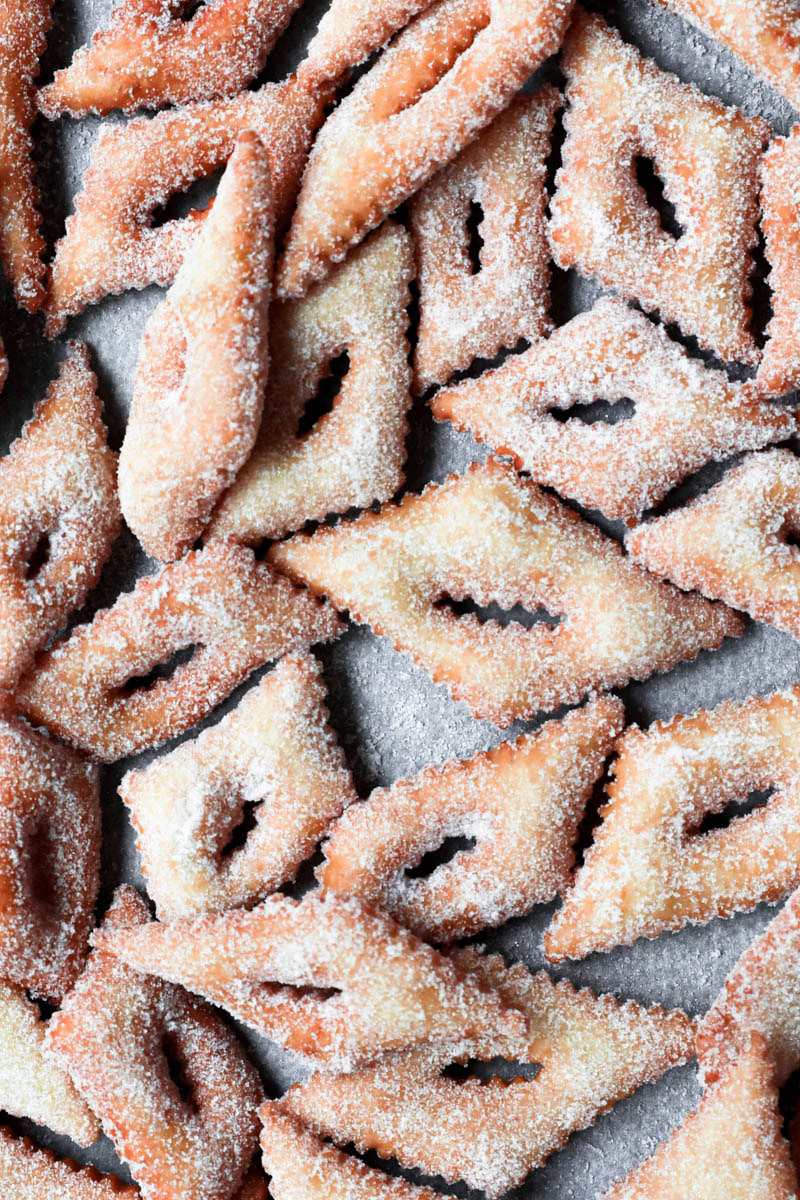
They are best eaten when freshly made. However, they hold their ground for up to 1 day, they become hard after that.
You can freeze the dough after you have shaped it into bugnes and before deep frying. To freeze first place the shaped bugnes on top of a baking tray lined with parchment paper (not touching each other) and cover with saran wrap. Place them in the freezer until they are completely hard. Then place them in a freezer bag or freezer container.
They keep for up to 1 month.
To defrost: let them sit at room temperature over a piece of parchment paper for 1 hour or until soft enough to deep fry. Then follow recipe instructions.
You can sprinkle them with powdered sugar instead of rolling them in granulated sugar.
They keep for up to 1 month.
The choice is yours! If you are going for a New Orleans style beignet, then most definitely sprinkle with powdered sugar! I prefer them rolled in regular sugar. Up to you!
Subscribe to the newsletter